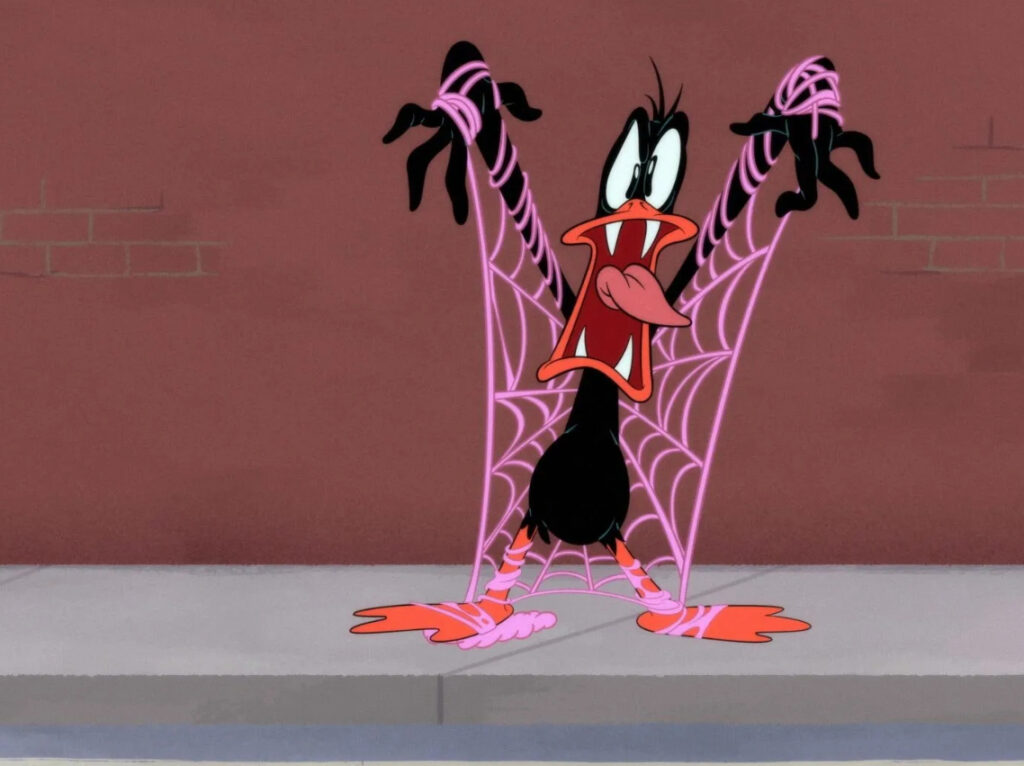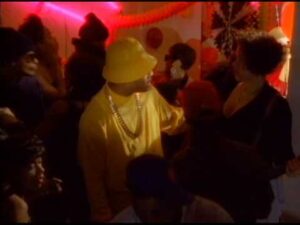There was a time when Bugs Bunny wasn’t just a cartoon character—he was a cultural ambassador. Armed with a carrot and wisecracks, he taunted Nazis in World War II-era shorts, symbolized irreverent American wit, and later became the face of an empire that included everything from Emmy-winning specials to McDonald’s Happy Meal toys. But in 2025, the fate of Bugs, Daffy, Porky, and the rest of the Looney Tunes gang appears increasingly uncertain, not because the characters have lost their spark—but because the people charged with preserving their legacy don’t seem to understand, or value, it.
The latest sign of trouble comes in the form of troubling reports that Warner Bros. Discovery, under CEO David Zaslav, is once again undercutting its own animation library. Dozens of classic Looney Tunes episodes have quietly disappeared from Max, Warner Bros.’ own streaming platform, a move that animation historian Jerry Beck called “insane” in a recent interview. But this isn’t a shocking turn of events. It’s merely the latest beat in a long symphony of mismanagement—one that reveals just how fragile the stewardship of legacy IPs becomes when guided by short-term bottom lines rather than creative vision or cultural responsibility.
The Zaslav Doctrine: Cost-Cutting Over Content
Since taking the helm at Warner Bros. Discovery, David Zaslav has made headlines—and enemies—for his unapologetically ruthless approach to content management. In the name of cutting costs, Zaslav shelved nearly complete films like Batgirl, gutted CNN+, and axed hundreds of hours of animated content in moves that baffled creatives and executives alike. The logic, however twisted, was clear: why pay residuals or hosting fees for content that doesn’t immediately drive new subscriptions?
The Looney Tunes library, once a crown jewel of Warner Bros., has now been reduced to a set of licensing negotiations and algorithmic cold math. Despite its importance in the pantheon of American animation, the series has been treated as discardable—a line item on a spreadsheet rather than a living archive of innovation.
This year alone, over 250 episodes from Looney Tunes and Merrie Melodies were removed from Max without warning or fanfare, prompting outcry from animation fans and historians. Even if some of these episodes eventually return, the damage is clear: Warner Bros. is signaling that heritage doesn’t matter unless it pays immediate dividends.
What’s Up, Industry? How We Got Here
To understand the fragility of Looney Tunes in the Zaslav era, it’s important to trace its bumpy journey through corporate America. Warner Bros. has always had a complicated relationship with its animation division. After the original theatrical shorts era ended in the 1960s, Warner licensed much of its catalog to television and later launched new content in fits and starts.
In the 1990s, Tiny Toon Adventures and Animaniacs offered a brief renaissance, reintroducing the irreverent spirit of classic Looney Tunes to a new generation. But by the 2000s, things began to fragment again. While Disney cultivated its animated legacy with curatorial care—offering remastered classics, rotating vaults, and brand stewardship—Warner’s handling of its animated past was scattershot at best.
Instead of building a cohesive brand identity around Looney Tunes, Warner Bros. turned it into a licensing machine. The characters were everywhere—on apparel, in commercials, in nostalgia-bait mashups like Space Jam—but rarely in well-supported, original projects. Exceptions like The Looney Tunes Show (2011–2014) and Looney Tunes Cartoons (2020) showed promise, but never got the backing needed to scale into enduring cultural moments.
Jerry Beck Speaks: A Historian’s Alarm Bell
In speaking with IndieWire, Jerry Beck—a respected animation historian who has chronicled the history of American cartoons for decades—sounded the alarm. Beck has always believed in the educational and historical importance of Looney Tunes. To him, these aren’t just relics—they are foundational works that taught the animation industry how to stretch, squash, and speak truth through comedy.
Beck called Warner Bros. Discovery’s programming choices “puzzling” and “disrespectful,” especially given how profitable and beloved these characters still are. “It’s not like these cartoons are unpopular,” Beck noted. “People want to see them.”
More importantly, the removal of episodes from streaming platforms signals a deeper rot: a disregard for legacy in favor of short-term optics. For historians like Beck—and for the generations who grew up on these cartoons—this isn’t just a bad business move. It’s a cultural erasure.
What’s Lost When You Delete a Duck
Removing Looney Tunes from public platforms is not merely about denying fans access to Bugs or Daffy. It’s about breaking the continuity of shared culture. These characters were once the Greek gods of American animation—archetypes of wit, frustration, pride, and rebellion. They taught children how to laugh at authority and showed adults how satire could unmask power.
In an age where nostalgia is currency, Warner Bros. had every opportunity to celebrate its past. Instead, it has repeatedly chosen to hide it behind licensing black holes, botched reboots, and disappearing content. When Looney Tunes gets pulled from Max, it doesn’t just vanish from screens—it vanishes from memory. It stops becoming part of the intergenerational dialogue that made it timeless.
Compare and Contrast: The Disney Difference
It’s instructive to look across the lot at Disney, where animated legacy is handled with museum-level care. Whether through the Disney+ platform’s curated collections or its perpetual rereleases of vault titles, Disney treats its older IP as sacred. Even when controversy arises—over outdated racial caricatures or gender politics—Disney contextualizes the work, offering disclaimers instead of disappearing acts.
Warner Bros., by contrast, seems to have no consistent archival policy. Its animated classics are routinely mishandled, misrepresented, or outright ignored. There is no equivalent to the Disney Vault. No thoughtful curation. No effort to bridge the past with the present in a meaningful, consistent way.
This is especially frustrating because Looney Tunes remains, arguably, the most influential animation library outside of Disney’s own. From the physical comedy of Tom & Jerry to the fourth-wall-breaking of Deadpool, modern media still dances in the shadows of Chuck Jones and Tex Avery.
The Zaslav Problem Is an Industry Problem
To place all the blame on David Zaslav would be to miss the larger point: the entertainment industry, now driven by mergers and algorithmic logic, is no longer equipped to protect art. Zaslav, for all his bravado, is simply the face of a wider industry shift—one where catalog content is leveraged, slashed, or sacrificed based on quarterly earnings.
The shift to streaming only accelerated these tendencies. The old model—where reruns generated revenue through syndication—allowed legacy content to survive. Today, with data driving every decision, even beloved shows can be axed if they’re not actively trending. That’s why the problem isn’t just Looney Tunes. It’s OK K.O., Infinity Train, and a dozen other shows unceremoniously buried in recent years.
Animation, more than most mediums, is vulnerable in this climate. It’s expensive. It’s niche. And it doesn’t always conform to the immediacy demanded by digital executives. But animation also contains some of the most daring, creative work in media history—and it deserves better than to be treated like junk stock.
Bugs Deserves Better
There is something deeply perverse about a company being unable to care for its own crown jewels. Bugs Bunny, the trickster hero, the duck-slaying smart aleck, the drag-performing rabbit of legend, should not be relegated to out-of-print DVDs and random YouTube uploads. He should be a living part of the media landscape.
The same goes for the broader Looney Tunes cast: Elmer Fudd, Yosemite Sam, Marvin the Martian, and yes, even Pepe Le Pew. These characters aren’t flawless, but they are foundational. And rather than hiding the problematic aspects, the modern Warner Bros. should lean into the opportunity for thoughtful restoration, historical framing, and creative reimagination.
Imagine a world where Looney Tunes shorts are remastered in 4K, paired with expert commentary, and spotlighted alongside modern creator interviews. Imagine archival pop-ups explaining the cultural context of a 1942 wartime cartoon. There is a hunger for this kind of curation—a smarter, more respectful way of honoring the past while informing the present.
But that would require vision. That would require leadership that sees the value in nurturing a cultural inheritance, not simply exploiting it.
So What Happens Next?
For now, the Looney Tunes remain in limbo. Some episodes may return to Max. Some may reappear in a different licensing format. But the bigger question lingers: can Warner Bros. Discovery recover its soul?
The real solution lies not in nostalgia or PR damage control, but in infrastructure. Warner Bros. needs a division solely focused on animated legacy. Not just preservation, but reanimation—finding ways to present old works in new lights, and commissioning new content that respects, rather than exploits, what came before.
The future of Looney Tunes doesn’t have to be grim. The characters are too good, too iconic, too enduring to be forgotten. But they need stewards—not marketers. Champions—not cost-cutters. And right now, that kind of leadership is sorely lacking.
Until then, Jerry Beck and animation fans around the world will keep fighting the good fight. Because this isn’t just about cartoons. It’s about what we choose to remember—and what we allow to disappear.
And if Warner Bros. isn’t careful, the last laugh might belong to the vault.
No comments yet.







